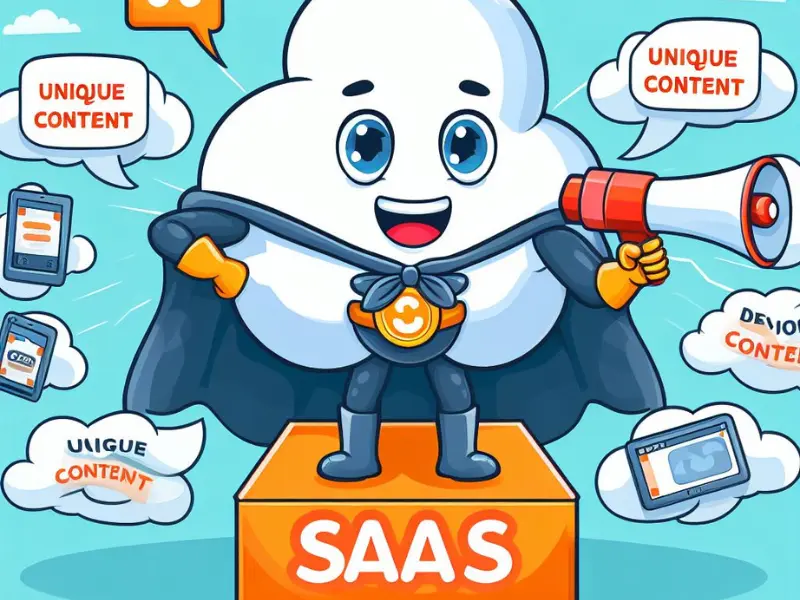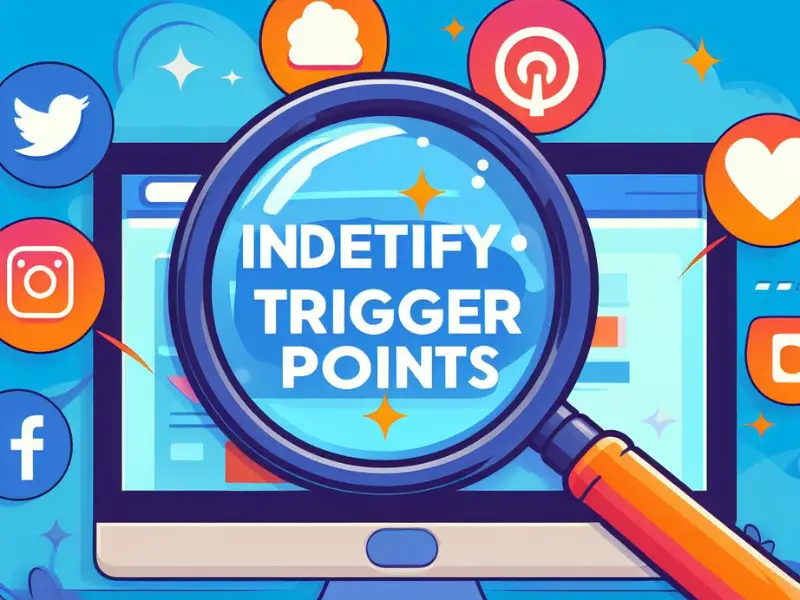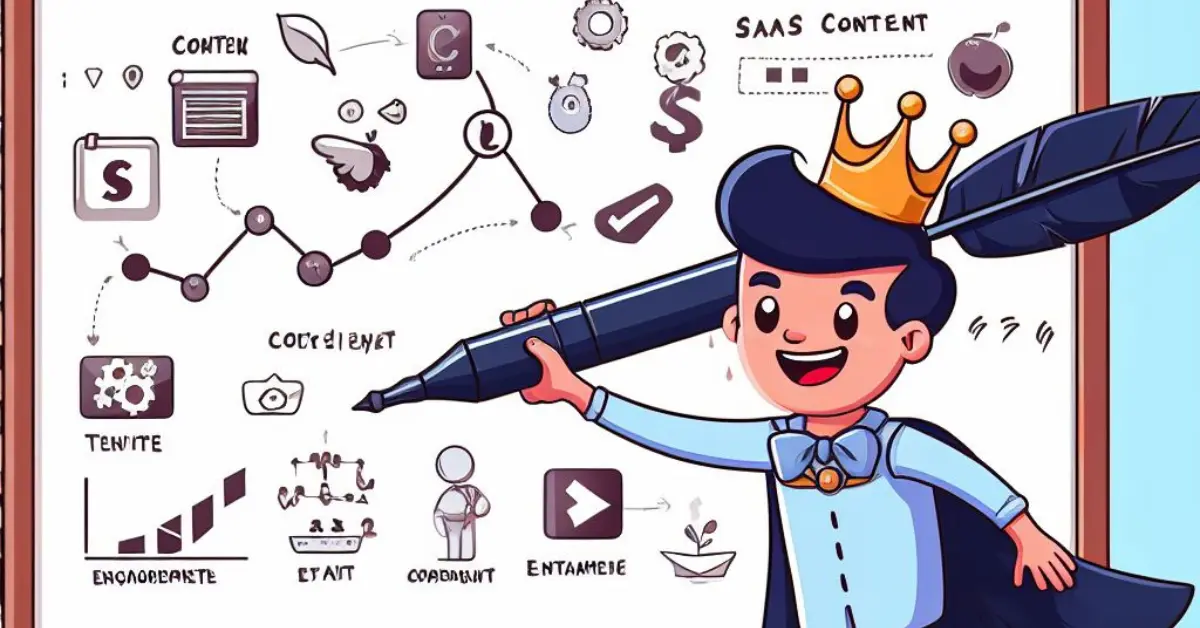In the ever-evolving landscape of digital marketing, one term that has gained significant prominence is “SaaS Content Marketing.” SaaS, short for “Software as a Service,” has revolutionized the way businesses operate and deliver services to their clients. But how can SaaS startups leverage content marketing to gain a competitive edge in this rapidly changing landscape?
Understanding Saas Content Marketing
Before delving into the strategies that startups can employ, it’s essential to grasp the concept of SaaS content marketing. In simple terms, SaaS content marketing is a strategic approach to introducing a product, establishing its position in the market, and building awareness for SaaS organizations. What is SaaS content marketing? This question is crucial for effectively implementing these strategies.
For startups venturing into the SaaS arena, content marketing strategies can be a game-changer. These strategies not only increase awareness but also drive usage and implementation of SaaS solutions. Surprisingly, a significant number of businesses, approximately 63%, lack a documented content marketing strategy. This gap presents an excellent opportunity for startups to seize the initiative.
Why SaaS Requires a Unique Content Marketing Approach

One might wonder why SaaS companies need a different approach to content marketing. The answer lies in the nature of the SaaS business model.
Selling Technology and Service Saas content marketing
Unlike traditional businesses that primarily sell products, SaaS companies offer both technology and service. This dual offering demands a distinct marketing approach to effectively convey the value proposition to potential customers. One crucial aspect of promoting SaaS businesses is developing a strong content marketing strategy. How to Create a SaaS Content Marketing Strategy is essential to not only showcase the features of the software but also highlight the ongoing support and benefits that come with the service.
Digital-Savvy Audience
SaaS buyers are predominantly digital users. They rely heavily on digital channels and reviews when making purchase decisions. Consequently, digital marketing and search engine optimization (SEO) become critical components of SaaS content marketing.
Focus on Customer Education
SaaS companies prioritize building long-term customer relationships and generating repeat business. To achieve this, they must educate prospects and address customer concerns effectively. This requires a two-way approach in content marketing. A 10-Step Guide to Successful SaaS Content Marketing can serve as a roadmap for creating compelling content that not only attracts potential customers but also nurtures existing relationships, fostering a strong and loyal customer base.
Strategies for SaaS Content Marketing Success
1. Identify Your Target Audience
When formulating a content marketing strategy for a SaaS startup, the focus should be on reaching potential customers who may not already be familiar with the business. Steps to Find Your Target Audience: Start by creating a checklist of questions about your target audience. Consider factors like age, gender, monthly income, and whether your audience consists of consumers or businesses.
Expanding Upon Identifying Your Target Audience
Identifying your target audience is the cornerstone of a successful SaaS content marketing strategy. Beyond the basics of demographics, delve deeper into psychographics. Understand your audience’s pain points, challenges, and aspirations. Are they small business owners looking to streamline operations? Are they enterprise-level decision-makers seeking efficiency solutions? Creating detailed buyer personas can help you tailor your content more precisely.
2. Identify Trigger Points

Once you’ve pinpointed your target audience, the next step is to identify the trigger points that influence their purchasing decisions. These trigger points vary based on factors such as audience demographics and industry. Walk through the customer’s experience and the steps they take to become customers. This will help you tailor your content to address their needs at each stage of their journey.
Expanding Upon Identifying Trigger Points
Understanding the journey your potential customers take is crucial. It’s not just about identifying trigger points but also mapping the entire customer journey. From the initial awareness stage to the decision-making phase and post-purchase support, your content should address their evolving needs. Implement marketing automation tools to deliver the right content at the right time, nurturing leads toward conversion.
3. Set Clear Campaign Goals

Before executing any content marketing strategy, define your campaign goals. Set Clear Campaign Goals. Establishing clear goals provides a roadmap for your efforts and helps you anticipate potential challenges. Pay attention to specific marketing metrics, such as the average lifetime value of each unique visitor, the percentage of new and returning visitors, and sign-ups per visitor.
Expanding Upon Setting Clear Campaign Goals
While setting campaign goals is essential, it’s equally vital to align these goals with your overall business objectives. Are you aiming for rapid user acquisition, or is your focus on long-term customer retention? Define key performance indicators (KPIs) that align with your goals. For instance, if user retention is a priority, track metrics like churn rate and customer lifetime value to gauge success.
4. Conduct Keyword Research
Search engine optimization (SEO) can be a game-changer for SaaS businesses. Keywords play a crucial role in SEO, so thorough research is essential before choosing the right ones. Identify keyword terms that represent each stage of your customer’s journey. Tailoring your content around these keywords can enhance marketing and sales effectiveness while improving customer satisfaction and retention.
Expanding Upon Conducting Keyword Research
Keyword research isn’t a one-time task; it’s an ongoing process. Continuously monitor keyword trends and adapt your content accordingly. Explore long-tail keywords, question-based queries, and voice search optimization to stay ahead in the SEO game. Leverage SEO tools and analytics to identify high-impact keywords that can boost your organic traffic.
5. Analyze Your Competitors
Competitors are a presence in every industry, and studying their activities can provide valuable insights. Monitor where your direct competitors appear in terms of backlinks and the keywords, platforms, and topics they target. Armed with this information and a well-defined marketing strategy, you can position your startup to outperform the competition.
Expanding Upon Analyzing Your Competitors
Competitor analysis should encompass not only your direct competitors but also those in adjacent markets. Identify gaps in their content strategies and seize the opportunity to fill them. Furthermore, analyze their content distribution channels and partnerships. Look for untapped platforms or influencers who can amplify your reach and impact.
6. Develop a Production Strategy saas content marketing
Creating high-quality content consistently is vital for SaaS content marketing success. To achieve this, follow these steps
- Identify your target audience and select topics and keywords accordingly.
- Maintain a content planning calendar to ensure ongoing productivity.
- Consider hiring content creation specialists to enhance your content’s quality and effectiveness.
- Communicate your audience and expectations clearly to your content creators.
- Create a publication schedule to keep your audience engaged with your content.
Expanding Upon Developing a Production Strategy
Consistency in content production is key, but it should never compromise quality. Invest in content creators who understand your industry and can communicate complex SaaS concepts effectively. Experiment with various content formats, from blog posts and infographics to webinars and podcasts, to cater to diverse audience preferences. Track content performance to refine your production strategy continually.
7. Plan Your Content Distribution Approach saas content marketing

Your content distribution approach can make or break your entire content marketing strategy. Pay attention to these key points
- Determine where you will publish your content.
- Decide whether your content will be publicly available or gated.
- Choose social media platforms and influencers to promote your services.
- Explore partnerships and guest blogging opportunities to expand your reach.
Expanding Upon Planning Your Content Distribution Approach
Content distribution is about maximizing your content’s visibility. Leverage a multichannel approach to reach your audience where they are most active. Utilize email marketing to nurture leads, engage in social media advertising to target specific demographics, and explore content syndication to reach wider audiences. Collaborate with industry influencers to tap into their follower base and gain credibility.
8. Monitor Results and Make Adjustments
Perhaps the most critical step in the entire process is result monitoring and adjustment. Failure to monitor results effectively can render all your content marketing efforts in vain. Analyze your results, categorize them as positive or negative, and maintain consistency with what’s working. Simultaneously, address any weaknesses promptly to increase and sustain profits.
Expanding Upon Monitoring Results and Making Adjustments
Continuous improvement is the hallmark of successful SaaS content marketing. Implement robust analytics tools to track user behavior, conversion rates, and engagement metrics. Conduct A/B testing to optimize your content for higher performance. Embrace data-driven decision-making, and be agile in adjusting your content strategy based on real-time insights. Regularly revisit your campaign goals to ensure they align with changing market dynamics.
In Conclusion
In the realm of content marketing for SaaS, strategic goals precede metrics, and cumulative growth takes precedence. Campaign goals serve as the foundation, diverse audiences and carefully selected keywords are targeted, contact lists are built, and a rigorous production process is followed. By embracing SaaS content marketing, startups can enhance lead generation, increase conversions, and ultimately boost profits. In this dynamic digital age, prioritizing content marketing is essential for expanding your reach and achieving sustained success. So, don’t wait—start implementing these strategies today to position your SaaS startup for long-term growth and prosperity.
With a well-executed content marketing strategy, your SaaS startup can not only survive but thrive in the competitive landscape, setting the stage for a prosperous future.
